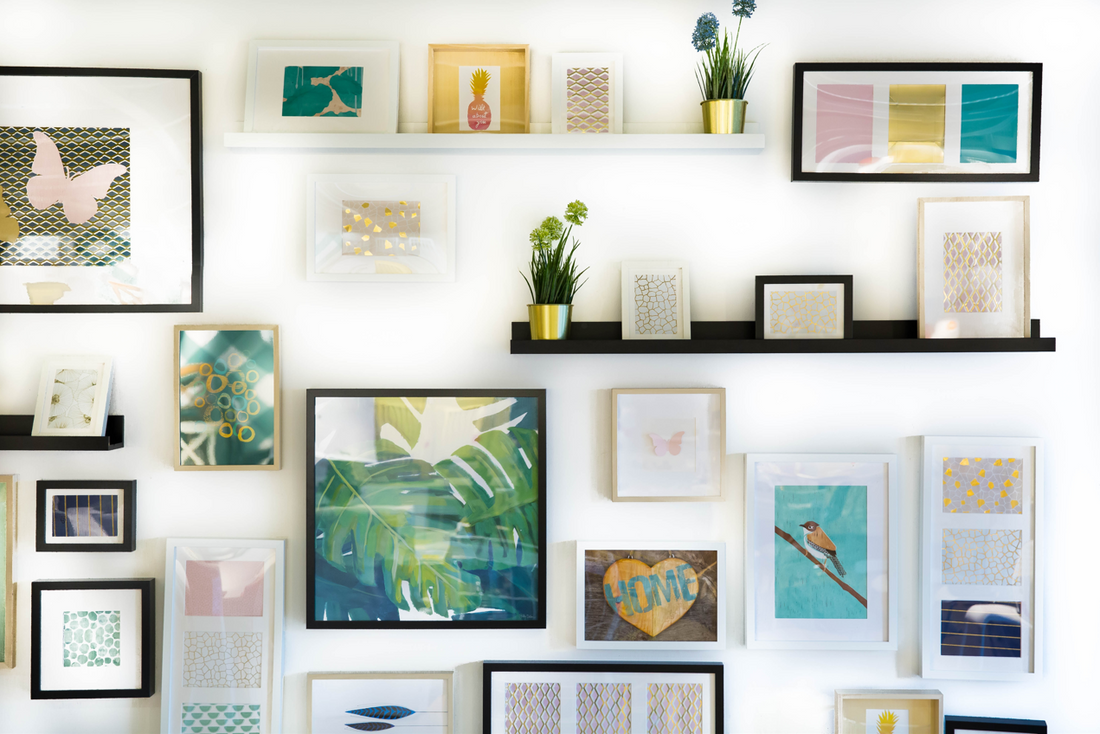Printmaking is a diverse and evolving art form that encompasses various techniques, collaborations, and materials.
An art print is a reproduction of an original artwork created using various printmaking techniques. It captures the essence of the original piece and is produced in limited editions, making it accessible and collectible for art enthusiasts.

In this article, we delve into the world of prints and multiples, exploring the key aspects that collectors and enthusiasts should know. From understanding different printmaking techniques to appreciating the significance of editions and the role of paper, we provide valuable insights that will enhance your knowledge and appreciation of this art form.
- Exploring Printmaking Techniques: Prints are created through transfer processes, and four primary techniques stand out: etching, lithography, screen-print, and woodcut. Each technique has unique characteristics and a rich history.
- Etching: A delicate and intricate technique involving scratching an image onto a metal plate covered with wax, etching produces atmospheric effects and fine black and white images.
- Lithography: Artists draw onto a stone using a grease-based medium, enabling them to work with color and multiple stones to create complex images.
- Screen-print: Stencils and a mesh screen are used to push ink onto paper, making it ideal for reproducing commercial photographs and popular images.
- Woodcut: The oldest printmaking process, woodcut involves carving an image into a block of wood and transferring it onto paper by applying ink to the raised portions.

- The Significance of Prints as Artworks: Prints go beyond mere copies of originals and involve a collaborative process between the artist and print studio. Skilled printers work closely with artists, resulting in unique editions that are considered works of art in their own right.
- Limited Editions: Prints are produced in limited quantities, known as editions, and are highly valued by artists. They are sold through various channels such as artists, galleries, or publishers. Naturalist Gallery releases exclusive, limited edition prints with artists. Apply your art.
- Collaborative Nature: Printmakers contribute their expertise, making print studios a space for innovation and creative exploration.
- Artistic Value: Prints hold equal importance to other works on paper, serving as a distinct creative outlet for artists.
- Motivations for Artists to Create Prints: Artists are drawn to printmaking for various reasons, such as the collaborative environment, innovative possibilities, and the ability to document the creative process.
- Collaborative Environment: Print studios provide artists with opportunities to work closely with skilled technicians, fostering creativity and experimentation.
- Innovation and Exploration: Prints offer new avenues for artists to explore different techniques, materials, and visual languages.
- Documentation of the Creative Process: Prints can serve as a visual record of an artist's creative journey, capturing different stages of development.

- Understanding Originals, Editions, and Multiples: Distinguishing between originals, editions, and multiples is crucial when collecting prints. Each category represents a unique aspect of the printmaking process.
- Original Prints: Limited-edition prints are considered original works of art, as they are produced in a specific edition size and often marked with an edition number.
- Artist's Proofs: Artists may create a limited number of artist's proofs, identical to the standard edition. These proofs may be marked as A/P and are highly valued.
- State Proofs: Printers and artists use state proofs to document the progression of a print throughout its production, showcasing changes and refinements made during the creative process.
- Multiples: In contrast to limited editions, multiples are produced in larger quantities without specific limitations. They are often less expensive and more accessible to a wider audience.

- The Role of Paper in Printmaking: The choice of paper is crucial in printmaking, as it affects the final appearance and longevity of the artwork. Various factors, such as texture, weight, and color, come into play when selecting the appropriate paper.
- Printmaking Papers: Specialized printmaking papers are designed to withstand the pressures of the printmaking process, ensuring consistent ink transfer and archival quality.
- Paper Texture: Smooth or textured papers can significantly impact the visual characteristics of a print, offering different levels of detail and depth.
- Paper Weight: The weight of the paper determines its thickness and durability, with heavier papers providing a more substantial feel and increased longevity.
- Paper Color: The choice of paper color can influence the overall aesthetic and mood of a print, complementing or contrasting with the artist's imagery.

Naturalist Gallery of Contemporary Art releases limited edition prints with contemporary artists.
Artists worldwide are invited to apply for an exclusive limited edition print release. Selected artists will benefit from expert curation, increased visibility, and potential inclusion in marketing materials. Choose between framed paper prints or canvas prints. Don't miss this chance to showcase your artwork, reach a wider audience and earn money selling fine art prints. Apply to Naturalist Gallery.
Prints and multiples form a fascinating realm within the art world, encompassing a wide array of techniques, editions, and paper choices. By understanding the nuances of printmaking techniques, appreciating the collaborative nature of print production, and recognizing the significance of different paper qualities, you can deepen your understanding and enjoyment of this versatile art form. Whether you are a collector, artist, or art enthusiast, exploring the world of prints and multiples is sure to provide endless inspiration and appreciation for the creative process.

You may also find the following articles helpful:
Fine Art Prints: What They Are And Why Make Them
How to Sell Art Online and Make Money
Building Your Online Presence As An Artist
10 Tips and Tricks for Maximizing Your Art Sales
How to Become a Successful Artist
Be Honest: Where Can I Display My Artwork?
Why Gallery Representation is Good for Artists: 9 Key Benefits

